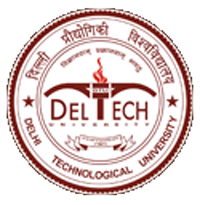Please use this identifier to cite or link to this item:
http://dspace.dtu.ac.in:8080/jspui/handle/repository/21655| Title: | OBJECT DETECTION USING FUSION OF MULTIBAND MICROWAVE DATA |
| Authors: | SINGH, SANJAY |
| Keywords: | OBJECT DETECTION MICROWAVE DATA FUSION OF MULTIBAND SCAT |
| Issue Date: | May-2025 |
| Series/Report no.: | TD-7856; |
| Abstract: | Detection and identification of surface and subsurface objects has been an area of research for remote sensing experts. Globally, researchers have struggled to detect and identify subsurface buried landmines using remote sensing technologies. Despite several research and efforts, people still lose their lives from the explosion of hidden landmines near the border areas. India has also long been fighting insurgency along northern borders. Remote sensing technologies may be helpful in the detection and identification of all or some of these objects and targets, which may either be on the surface or buried. The Ability of all-time vision and penetration capability of Scatterometer (SCAT) and Synthetic aperture radar (SAR) makes them suitable for the detection of objects adverse weather conditions. In this research, improvement of detection of surface and subsurface objects has been has been studied through three objectives. All the three objectives are based on use of different microwave data and associated methodology to achieve the desired outcomes. In the first objective, microwave remote sensing has been explored to detect buried targets (e.g., landmines). Although microwave-borne detection of shallow buried landmines is a safe option, it is a complicated and computationally profound process combining multiple parameters. This research uses data obtained in VV and HH polarizations and their fusion to minimize surface roughness for landmine detection. Therefore, in this objective, experiments have been carried out using a ground-based C and X-band (VV and HH polarization) microwave scatterometer to detect landmines. A microwave transmitter setup was established on a 24x24 frame size (5 cm of each grid) to collect the backscatter data from a landmine buried under the dry sand. A wooden profile is used to vary the soil surface roughness from 1cm to 5 cm. Raw data is iv subjected to various preprocessing steps: Calibration, deconvolution, and normalization. This objective involves processing under full-frame(24x24) and local frame (8x8) processing. In this task, the polarimetric characteristics of waves and interaction with buried landmines are critically evaluated through histogram, segmentation of images, and various statistical characteristics. Various numerical polarization fusion approaches have been assessed for their effect on landmine detection. In addition, a numerical polarization fusion approach ((HH+VV)- (VV-HH)) has been evaluated. At last, the performance of all approaches has been evaluated using entropy. The result indicates that multi-polarization fusion approaches minimize the surface roughness effects, further enhancing landmine detection. Analysis of multiband (C- and X-band) has been presented at the end to explore multiband data's capability to discriminate objects. In the second objective of this research, polarimetric characteristics of SAR have been utilized to improve man-made and natural object detection. PolSAR image is decomposed with hybrid decomposition methods to reduce the value of cross polarization coupling of scattering components. The value of the overestimated (dominated) scattering component is evaluated by calculating the mean scattering power of single, double-bounce, and volume scattering components. A novel scattering component fusion of L- and C- band PolSAR image has been proposed and evaluated to reduce the effect of overestimation. In this approach, the double-bounce component of the L-band is fused with the C-band's single and volume scattering components. The principal component analysis (PCA) is employed for fusing the two data sets, and the result is evaluated through SVM classification of man-made and natural objects. The third objective of this research focuses on image fusion of SAR and optical data. Sentinel-1A (SAR) and Sentinel-2A (optical) data have been downloaded from the v European Space Agency (ESA). This research also focuses on pixel-level SAR-optical fusion methods, fusion performance assessment, and applications. This objective explores an optimal combination of specific selected image fusion and image classification techniques to improve classification accuracy. Four fusion techniques, Brovey Transform, Hue-Saturation-Value (HSV), Principal component analysis (PCA), and Gram-Schmidt (GS) Transform, have been compared along with two classification methods, Support Vector Machine (SVM) and Maximum Likelihood (ML), have been explored. Improvement in five classes, urban, water, baresoil, forest, and vegetation agricultural, has been analyzed. The result indicates that the GS-ML combination gives superior classification accuracy than the GS-SVM combination. In contrast, PCA in combination with SVM provides superior accuracy compared to the combination of PCA-ML. Based on the results of this research, the fusion of microwave data improves the surface and subsurface object detection in all three objectives. In the first objective, the research findings encourage the potential of multiband, multi-polarization fusion techniques for enhancing landmine detection capabilities. The second objective found that utilizing the polarimetric nature of SAR and the fusion of scattering components improves the result. The third objective finds that not all fusion techniques improve accuracy, and image fusion techniques influence the accuracy of classification methods. So, an optimal approach is needed to explore the capability of fusion techniques fully. |
| URI: | http://dspace.dtu.ac.in:8080/jspui/handle/repository/21655 |
| Appears in Collections: | Ph.D. Electronics & Communication Engineering |
Files in This Item:
| File | Description | Size | Format | |
|---|---|---|---|---|
| SANJAY SINGH (ph.D.).pdf | 7.54 MB | Adobe PDF | View/Open |
Items in DSpace are protected by copyright, with all rights reserved, unless otherwise indicated.



